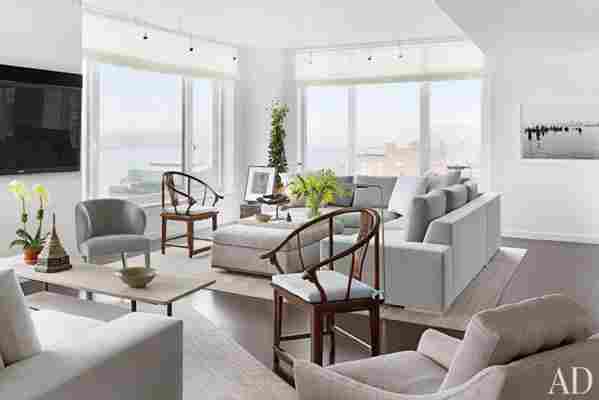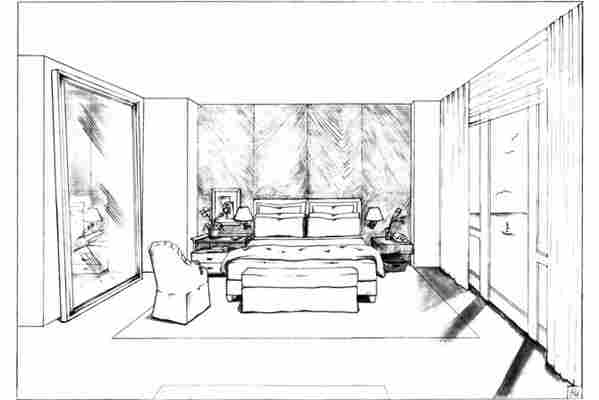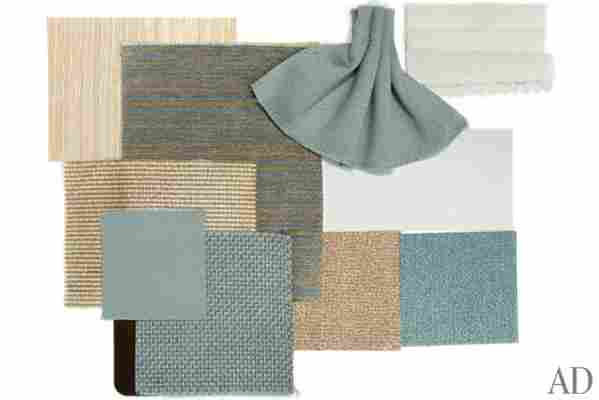Architectural Digest: Give us the play-by-play. What happens in your initial meeting with a client?
Vicente Wolf: Most people think it is a one-way interview, but really it works two ways. From my end, I’m seeing if what they’re looking for is the same as what I do—if there is a rapport.
AD: In the case of the downtown Manhattan apartment featured in our July issue, the homeowners were first-time clients. What about the couple appealed to you?
VW: I liked them immediately. They are both very gregarious and animated. They had been living on Park Avenue but they were moving into a very modern space and wanted a change in lifestyle. So many times you have to drag people to try something new—they were really ready to live in a different way.
AD: Did they offer any direction?
VW: They are both involved in the arts, so they had their own visions, from the furniture silhouettes to the colors to what they wanted the space to say as a whole. They could see in their minds generally, if not specifically, how they hoped to live.

AD: What kind of furniture did they request?
VW: Very modern. It’s my responsibility as a designer to not only be a personal shopper but also to take clients to an aesthetic place they didn’t know existed, that they couldn’t imagine. To me, modern means clean lines, minimal decoration. So even the antique Chinese chairs I chose for the living room fit that concept very well. You don’t have to respond literally to a client’s request. You can get more creative.
AD: And the color palette? What did they gravitate toward?
VW: When we work with new clients we go through a questionnaire about their likes and dislikes, including colors. Since the apartment overlooks the river, they wanted soft grays and pale blues.
AD: How long is the questionnaire?
VW: Five or six pages.
AD: That sounds intimidating.
VW: Well, they’re not filling it out by themselves. I ask the questions and someone else from my office writes down their answers. Often it’s much more revealing to the client than it is to me. They have to think concisely and clarify in their minds what they want. Sometimes they surprise themselves.
AD: That information must be very helpful to you.
VW: The questionnaire is very specific. It tells me what are your needs, what are your likes, what emotions you want to have in a given space. It’s not about giving me a picture so I can re-create a design—for instance, coming in with a magazine article about an 18th-century house when you live in a high-rise apartment.
AD: What happens after you gather all the intel?
VW: The space is measured and photographed. I also study the light and the views. I find that, for me anyway, the positive parts of a room are always obvious. I’m more interested in the things that aren’t right about a space. Those are the details that, when you integrate them well in the design, really make a room shine.

AD: How do you communicate your vision to a client?
VW: We take a period of time to design. Then the clients are shown the project room by room. I never put out a whole plan, otherwise they’re looking at this when I’m talking about that. So the floor plan is cut up and pieced together, and I explain what I feel their needs are for each space. Then I show them the furniture plan and a sketch of the room, which is always hand drawn in black and white. We go item by item—the color of the walls, a sample of the flooring, a drawing of a table, a piece of a carpet. It’s like a coloring book. You see the picture and you shade it in.
AD: Can most clients visualize a space based on floor plans and mood boards?
VW: They think so, but I don’t think they can. Also, we don’t do mood boards. I like to have the materials on the table. A board is very academic. There is more romance when you can touch the things in front of you.
AD: It must be hard to get an overall impression looking only at samples and swatches.
VW: I try to explain it like this: When you cook, you don’t use every spice the same way. You balance. It’s not about how much of each individual thing you put in but how it tastes in the end. It’s the same thing with a room—it must balance out. There needs to be a subtlety and a sense of discovery.

AD: Are there instances when a client’s inability to picture something leads to creative differences?
VW: Listen, I’m a creative person, but I’m also a businessperson. If you cannot sell your concept, you’re dead in the water. You have to be able to explain—not through emotion, but through intellect—why something needs to be there. I try very hard to get across the importance of each detail. It is my responsibility to explain my choices in a logical way rather than just say, “Oh it’s beautiful, you must love it.”
AD: For this project, were the homeowners sold on your ideas?
VW: For the most part, yes. Because I left the furniture floating there was this one blank wall, for which I designed a very large mirror. They were afraid it was going to be too glitzy, but the wife said, “We came to you for your talent and ideas. This is what you do. I’m going to have to trust you.” The concept was accepted.
AD: Tell us about the great reveal.
VW: They weren’t living there at the time, so we brought in all the furniture and then the candles, flowers, linens, and other accessories. When clients see a place all done, some cry, some get so elated. In this case, the husband was jumping for joy, though not literally.
AD: Presumably you make a point to be there.
VW: Yes, of course. You work months on a project. You want to be there to hand your baby over.
AD: Do you get visitation rights or is the job over once it’s done?
VW: I live for the moment. Yes, I may go back as a friend, but as soon as the project is installed I’m on to the next. One problem with designers is that they don’t see their jobs as having a beginning, a middle, and an end. Clients have to get on with their lives, and you have to get on with yours. Otherwise there is no sense of completion.
AD: Do you think you can do that more easily because you’re a minimalist? It might be more difficult for designers whose aesthetic involves layers upon layers upon layers.
VW: I suppose, but I can’t really answer that. I can’t understand any way other than mine.
Watch our video interview with Vicente Wolf about his design process.
Plus, tour the Manhattan apartment featured in our July 2012 issue.
